The rumblings of spies and secrets long past still haunt the tranquil trails of several U.S. National Parks. In fact, the forested hills of Maryland and Virginia once concealed America’s first school for spies.
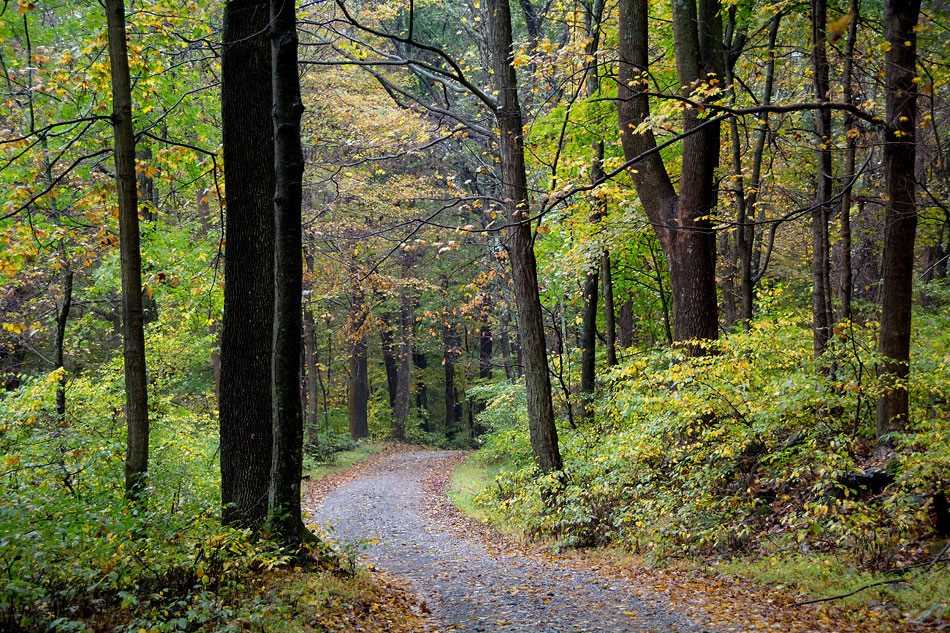
Catoctin Mountain Park today. Photo courtesy of NPS.
During World War II, the Office of Strategic Services (OSS) became America’s first all-purpose intelligence agency. This mysterious new organization took over parts of several national parks in the D.C. region to train recruits in the arts of espionage, hand-to-hand combat, intelligence gathering, and sabotage.
Catoctin Mountain Park—today the home of the U.S. president’s rural retreat Camp David—was once one of the largest of these OSS training camps.
What made the OSS so unusual and revolutionary were the recruits: a hodgepodge of Americans that included ivy league university graduates, artists, writers, conmen, forgers, and active-duty military all under the direction of World War I hero, General William “Wild Bill” Donovan.
Donovan’s ideal recruit was “a PhD who could win in a bar fight.”
Because of the varied backgrounds and experiences of the OSS recruits, Donovan had to establish secret training camps to teach the new officers all the ins-and-outs of spycraft. U.S. national parks were the perfect location: remote, secluded, and already owned by the federal government.
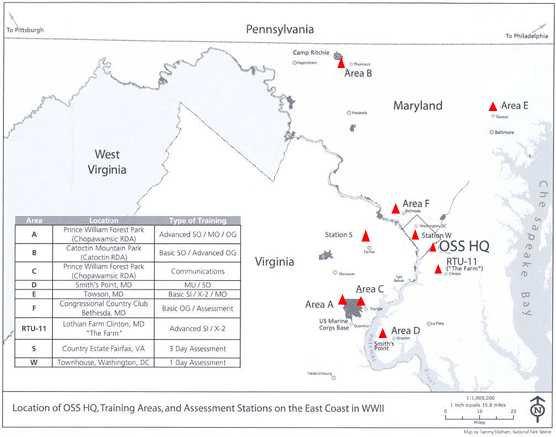
Graphic depicting locations of OSS training camps in the Washington, D.C. region. Graphic originally published by NPS.
Donovan’s “Glorious Amateurs,” as OSS officers came to be known, helped the Allies win the Second World War. And from the ashes of the OSS, today’s Central Intelligence Agency and U.S. Special Forces were born.
The Secrets of Catoctin
Located in North-Central Maryland, about a 2-hour drive from Washington D.C., Catoctin Mountain Park is managed by the National Park Service (NPS) and is part of the Appalachian Mountain Range.
During WWII, it was known as the Catoctin Recreational Demonstration Area and consisted of about 10,000 acres that housed various camps and recreational facilities for organizations throughout the Baltimore and Washington D.C. areas.
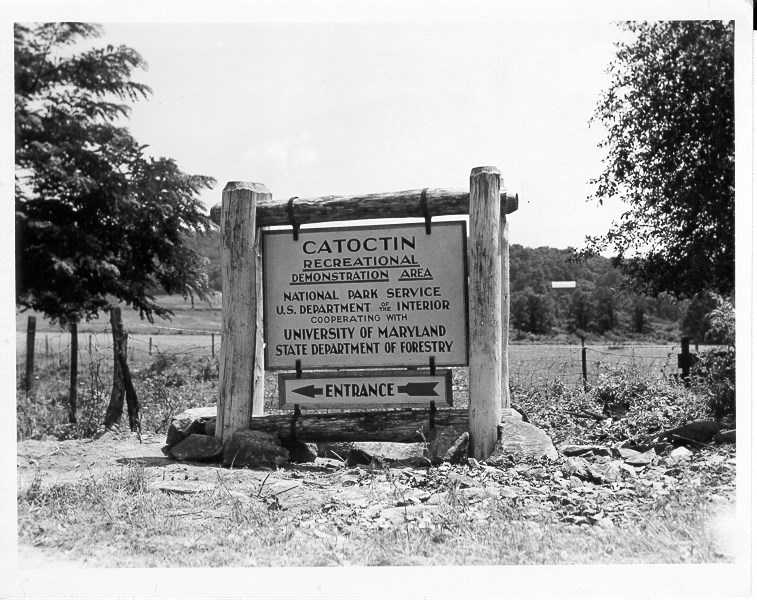
Historic photo of original Catoctin sign, late 1930s-1940s. Courtesy of NPS.
The OSS took over several sites within Catoctin, including Camp Greentop, Camp Round Meadow, and the areas surrounding what later became Camp David.
Camp Greentop, constructed in 1938, was the first camp in the U.S. built for children with physical disabilities. It’s listed on the national register of historic places.
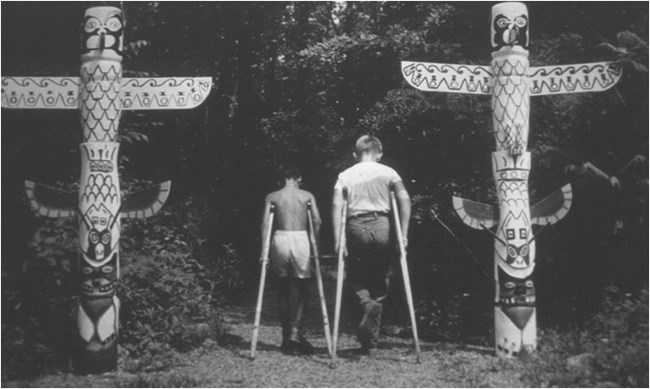
Did You Know...
The OSS recruits underwent a variety of difficult training at Catoctin: from physical challenges like obstacles, demolitions, parachuting, weapons, and hand-to-hand combat to more intellectual challenges like basic survival techniques, compass and map reading, cryptography, foreign languages, forgery techniques, and creating disguises.
The elite OSS Jedburgh commandos, who parachuted behind Nazi-occupied territory under the cover of night, trained at Catoctin before joining their British Special Operations Executive (SOE) colleagues in the United Kingdom for advanced paratrooper training.
You can learn more about the legendary Jedburghs here.
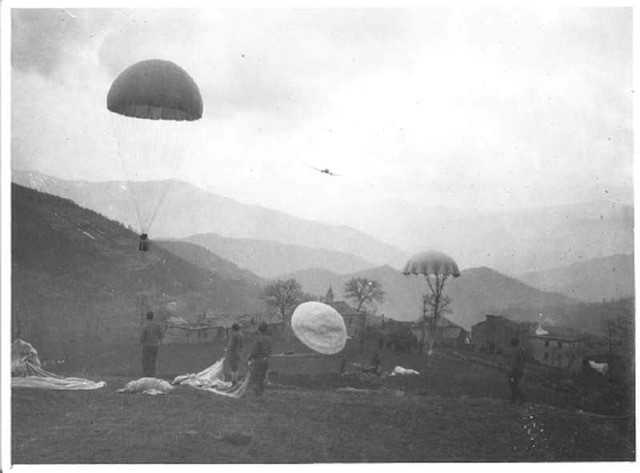
Legend of the Jedburghs
In order to conduct the most advanced training, the OSS often had to create its own structures from scratch, including obstacle courses.
According to the NPS, the first obstacle course at Catoctin—built in 1942 along Owens Creek—was made up of two ropes that trainees would have to use to cross back and forth while wearing heavy knapsacks.
However, the most impressive obstacle course built at Catoctin was the “Trainazium”: a giant, 18-foot high wooden structure made from a dozen oak trees that looked like a huge jungle gym.
OSS "Trainazium" Obstacle Course
Individual quarters are hidden in the woods and the students are taught to live in seclusion and conditions simulating those they may encounter as gorillas behind enemy line.
This outdoor trainazium was carefully constructed to develop muscles most used in individual close combat. In fact, the first principle of commando or gorilla training evolves from the theory that the best defense is a good offense. Hit first and talk afterwards – in short, yet tough.
Obstacles weren’t just restricted to rope courses, however. Between Camp Greentop and Camp Round Meadow, there was a walking path known as the “Demolition Trail.”
Yep, it’s exactly what it sounds like.
As trainees traveled back and forth between the two camps, instructors would randomly set off small explosive charges, which quickly taught the students to stay low and keep their heads down.
Not exactly a walk in the park…
Surprisingly, only one injury was reported: a young officer broke his jaw and lost several teeth while walking the trail.
The House of Horrors
The most expensive structure built by the OSS at Catoctin – costing around $120,000 in today’s money—was lovingly known as “the House of Horrors.” It was designed by the British SOE, who were experts in advanced operations training.
Inside the "House of Horrors"
After a few weeks of preliminary training, the student is told report alone to the pistol house, a mysterious structure he has never before entered. In the anteroom, the instructor gives him his problem. A group of enemy saboteurs are active in the neighborhood taking a heavy toll of life and property. The student is to make contact and to maintain it until either he or the enemy is wiped out. Whispering. Alright, here we go now, now watch your step on these stairs. Look out for that corner. That’s it. Alright up now. Easy does it. Keep coming. Now, watch yourself down here. Eyes open. That’s it. Okay. Down the stairs again. Up on that roof and watch it. Don’t lose your footing. Keep coming. That’s right. Alright, let’s go. Now, keep moving. Look out! Get him! Sound of gun shots. That’s it. Good boy! Alright. Down this passage now. Watch your step. That’s it. Look out for this corner! Down low. Get your gun out. There. Alright, all clear. Go ahead. Take it easy now. Look out for this. Quiet now. That’s it. Okay. Keep your eyes open. Sound of door slamming open and gun shots. That’s it. There are more of them around here. Alright, look out for this corner. There we are. There’s a door. Alright now, kick the door down and when you do, get him! Sound of kicking the door and gun shots. That’s right. Look out for this flooring. It’s bad. Don’t fall now. Keep moving. Look out for that guy. Keep your eyes open for him. Watch him! He’s there someplace. Sound of gun shots. That’s right. There are more of them around here, so don’t relax. Look around. There’s one! Sound of gun shots. Another one! That’s right. Sound of gun shots. Alright, quickly now. Magazine in. Test it. Alright, let’s go. Sound of gun shots.
The “House of Horrors” (also called the “Pistol House,” “Haunted House,” and “Mystery House”) was designed to teach shooting pistols close-up under realistic conditions.
According to the NPS, “Trainees were sent into the house with an instructor and were armed with a .45 automatic pistol. The house simulated a building that was occupied by Nazis and the interior was kept completely dark. The floors in the house were unstable and included frequent drops. There was a hidden phonograph that played realistic sounds including men speaking German. As they moved through the house they encountered Papier-Mâché Nazis with pistols.”
The “House of Horrors” was located in Camp Greentop where the stables are today.
One of the famous instructors at Catoctin was a British Captain named W.E. Fairbairn. He taught the recruits his special form of “gutter fighting” that was a combination of ju-jitsu and street fighting. He was an expert in disarming an enemy and “silent” killing techniques.
Fairbairn, along with a fellow British Captain E.A. Sykes, created a unique weapon known as the Fairbairn-Sykes knife designed for striking at vulnerable parts of an opponent’s body, especially the vital organs. Versions of this weapon were made well into the 1990s.
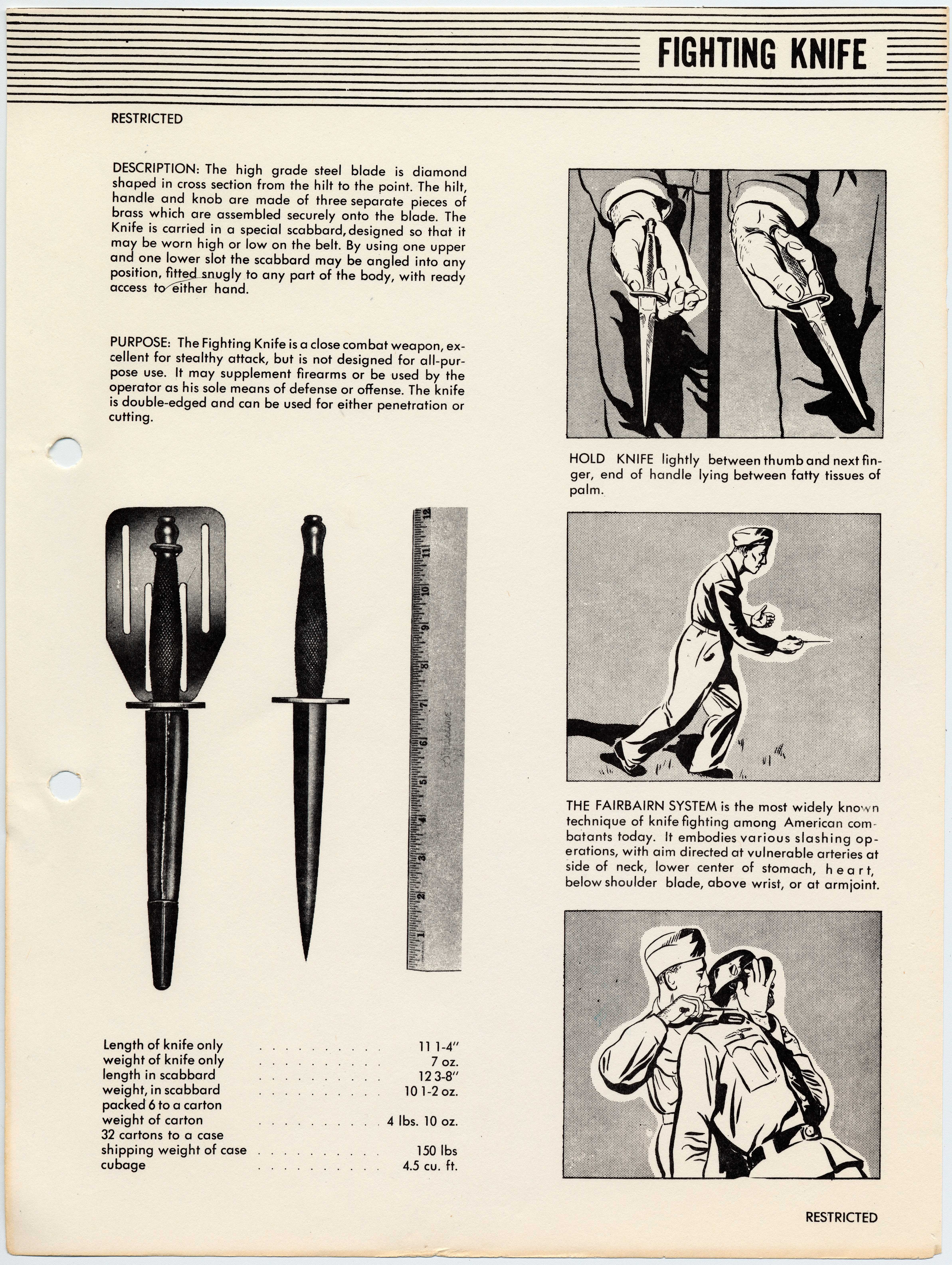
CIA Artifact: Fairbairn Knife
OSS recruits didn’t just practice their skills on the mountain; often they’d leave Catoctin for the nearby cities of Baltimore, Philadelphia, and Richmond to carry out mock “missions.”
The catch?
If they got caught by local law enforcement, they were on their own. The OSS would deny any affiliation with them.
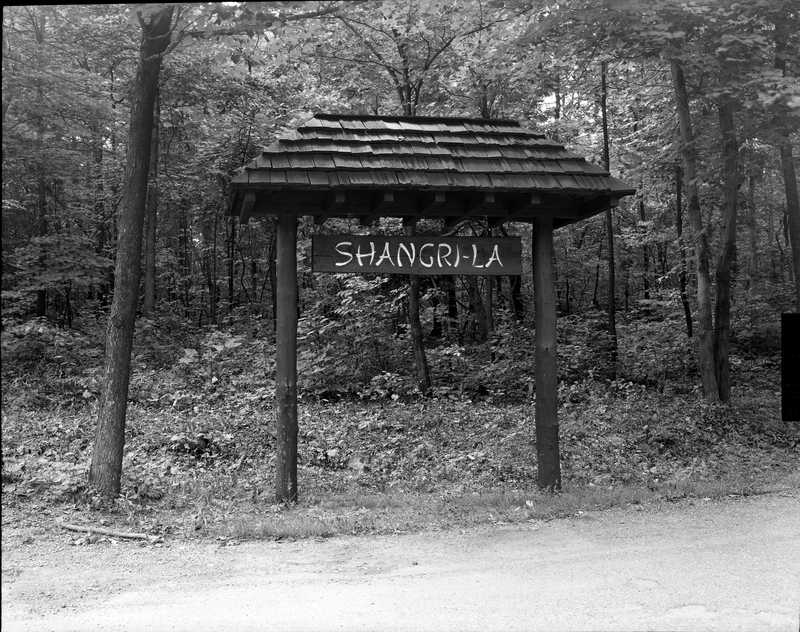
Original sign for “Shangri-La,” today known as Camp David. Photo taken by Naval Photo Center, 1950.
From the “House of Horrors” to “Shangri- La”
During WWII, Catoctin was home to more than just the OSS training camps.
In 1942, President Roosevelt was looking for a location near the nation’s capital for a rural presidential retreat. A former summer camp for federal employees as well as Boy Scout groups located within the Catoctin Recreational Demonstration Area seemed to be the perfect location.
At the time, two-thirds of the camp was being used by the OSS.
Nevertheless, Roosevelt visited the camp, known as Camp #3 or Hi-Catoctin, in April 1942 and instantly fell in love.
According to the NPS, when Roosevelt looked out the window at the spectacular view of this remote, idyllic paradise that would soon be his new mountain retreat he proclaimed, “This is Shangri-La.”
And that’s how the presidential retreat, now known as Camp David, got its first nickname: “Shangri-La.”
The mythical land of Shangri-La, according to historians, entered the popular imagination after the 1933 novel called “Lost Horizon” by James Hilton was turned into a Hollywood film. Hilton used the word “Shangri-La” to describe the legendary fictional Tibetan paradise Shambala. Eventually the name Shangri-La came to mean a lost paradise.
Roosevelt spent a total of 64 days at his Shangri-La during WWII.
Although the existence of the presidential retreat (and the OSS training grounds surrounding it) was a secret, the residents of nearby Thurmont, Maryland, knew when the president was in town because Marines would line the roads and bridges.
The president’s limousine was also easy to spot because it was the only armored car in the U.S. at the time. Interestingly, the vehicle originally belonged to the notorious gangster Al Capone. The FBI seized it in 1932 when they busted him for tax evasion.
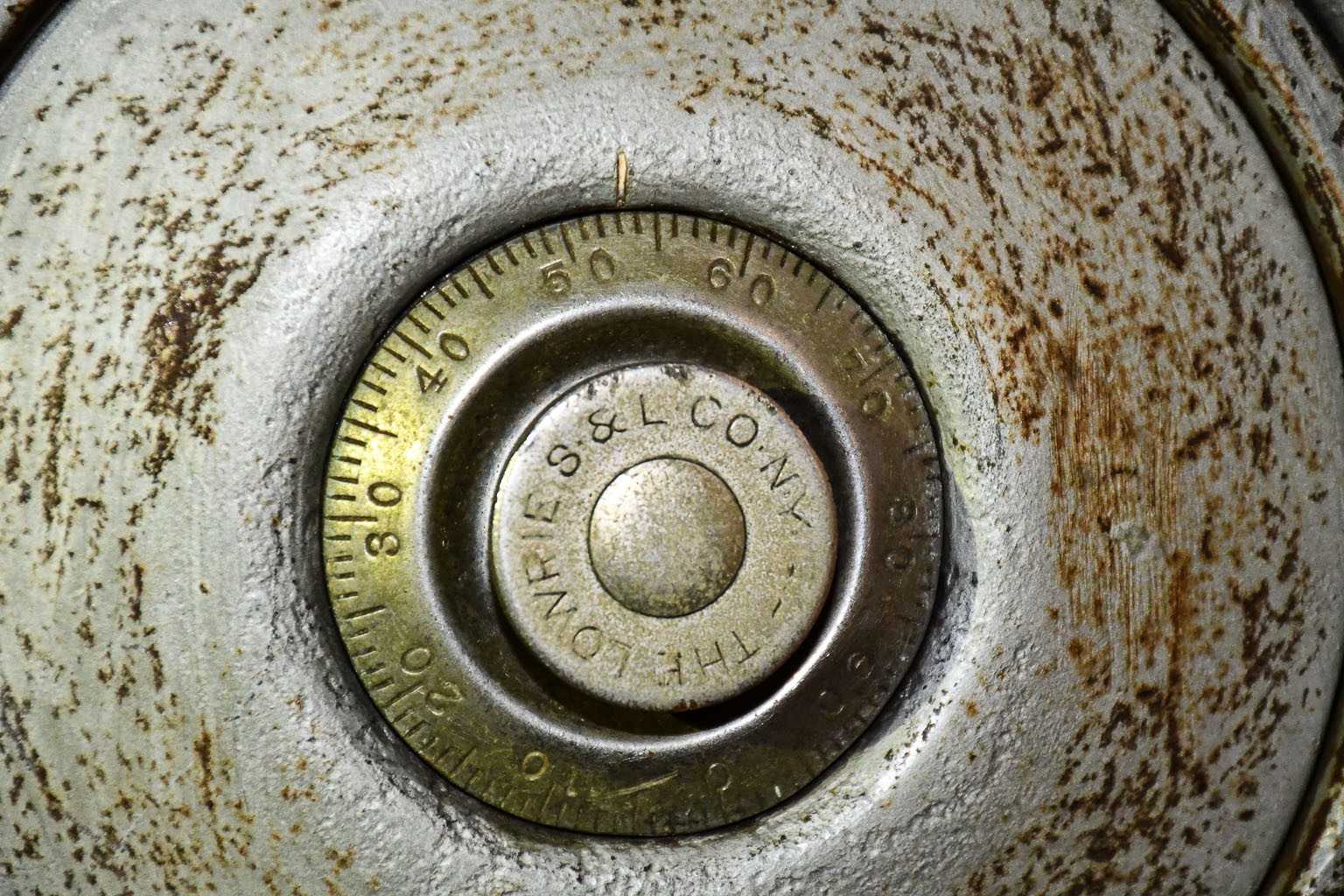
OSS wall-safe at Camp Greentop.
Speaking of Al Capone… Cracking Open a Modern Mystery
When the OSS vacated Catoctin’s Camp Greentop in June, 1944, they left behind a locked safe. Unfortunately, they forgot to tell anyone the combination.
In 2017, the CIA’s Office of Public Affairs partnered with the National Park Service and used our “safe-cracking expertise” (we know a guy!) to break into the old WWII OSS safe.
What did we find inside? Gold perhaps. Maybe long-forgotten WWII spy gadgets. Or was it like the infamous 1986 opening of Al Capone’s vault: empty.
You can watch the video below and see for yourself what, if anything, we discovered inside.
Cracking Open an OSS Mystery
Cracking open an OSS Mystery
(sounds of safe combination being turned)
(sounds of safe opening and a man whispers, “It’s open.”)
Empty. Nothing inside but rusted walls and and the echoes of secrets long departed.
Visiting Catoctin Today
The original 10,000 acre Catoctin Recreational Demonstration Area now consists of two parks: Catoctin Mountain Park and neighboring Cunningham Falls State Park. Both parks accept visitors year-round.
While Camp David is strictly off-limits (for obvious reasons), there are tons of hiking trails, camp sites, picnic spots, and scenic drives the public can enjoy throughout Catoctin Mountain Park.
Camp Greentop isn’t open to daily visitors, but the entire camp including the original OSS cabins can actually be rented for group functions.
If you’re interesting in walking in the footsteps of spies, check out the National Park Service site for more information to plan your visit.
Want to do a little armchair traveling instead?
Check out more of our Spy Sites stories featuring OSS training sites: Footprints in the Forest at Prince William Forest Park and Spies on Skies at America’s newest National Monument, Camp Hale.”
And if you’re spy nerds like us, here’s an entire online book by the National Park Service on the history of the OSS and America’s National Parks (in PDF form, so it’s free to read!)
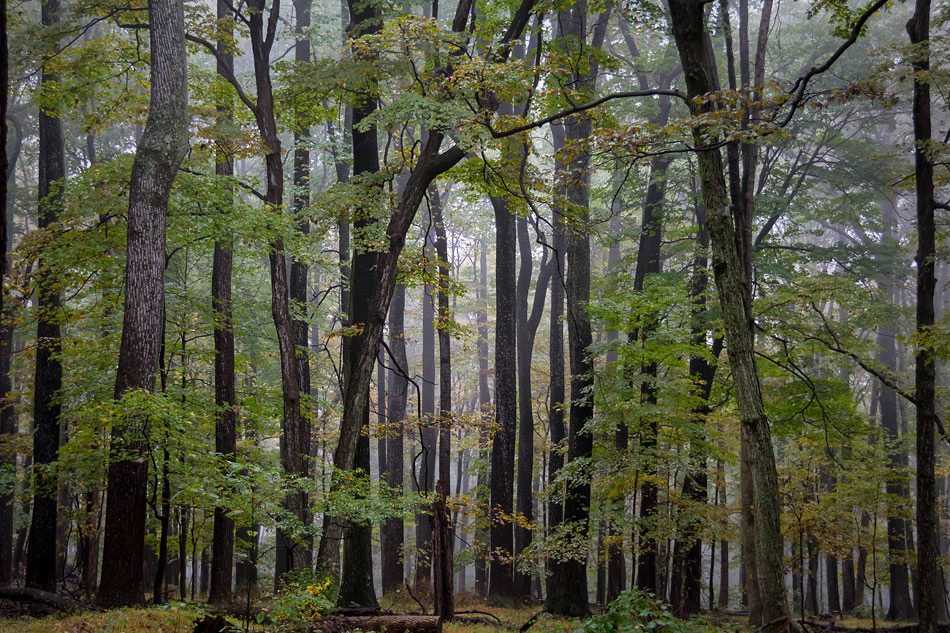
Catoctin Mountain Park today. Photo courtesy of NPS.

